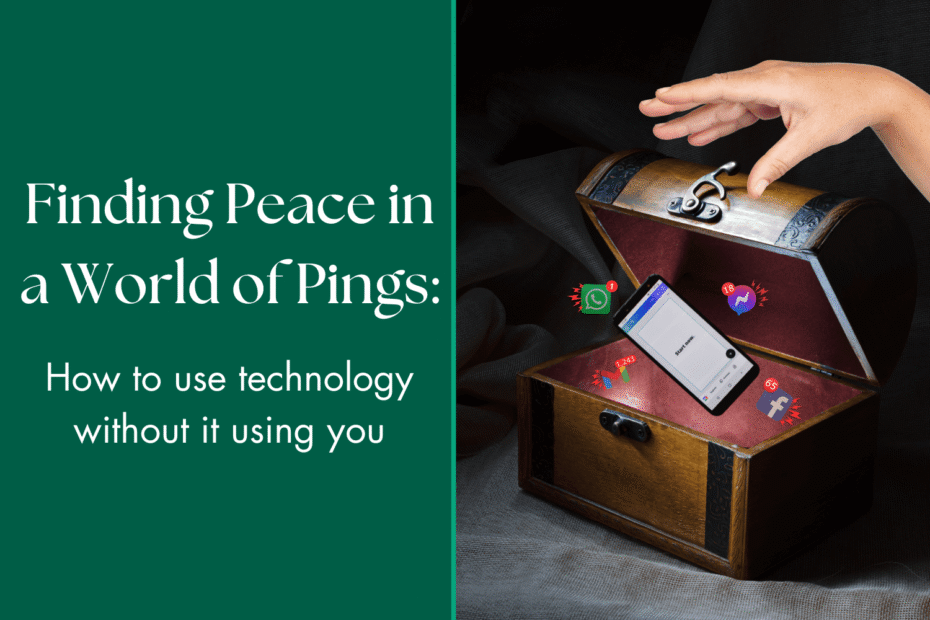Ever been in the middle of a thought—perhaps learning how to use technology—when your phone pings, dings, or buzzes? In that instant, your focus shatters, your stress levels spike, and your train of thought disappears like morning mist.
You’re not alone. In our work with clients across the Calder Valley, we’ve discovered a common thread: people don’t just want to know how to use technology—they want to know how to make it stop interrupting their lives when necessary.
The digital world wasn’t designed with your peace of mind as its primary objective. Learning how to use technology in a way that respects your attention requires intentional strategies and boundaries. But that doesn’t mean you can’t reclaim your focus and create the mental space you deserve.
The Attention Crisis: Why Your Devices Won’t Leave You Alone
Here’s an uncomfortable truth: many of the apps and devices in your life were specifically engineered to interrupt you.
This isn’t conspiracy thinking—it’s business strategy. Tech companies compete fiercely for your attention because attention translates to engagement, which translates to revenue. Every notification is deliberately designed to pull you back into their digital environment.
The result? The average person checks their phone 96 times daily—once every 10 minutes of waking life. This isn’t just distraction; it’s a fundamental reshaping of our capacity for sustained attention. Understanding how to use technology mindfully has become essential for mental wellbeing.
The Hidden Cost of Constant Interruptions
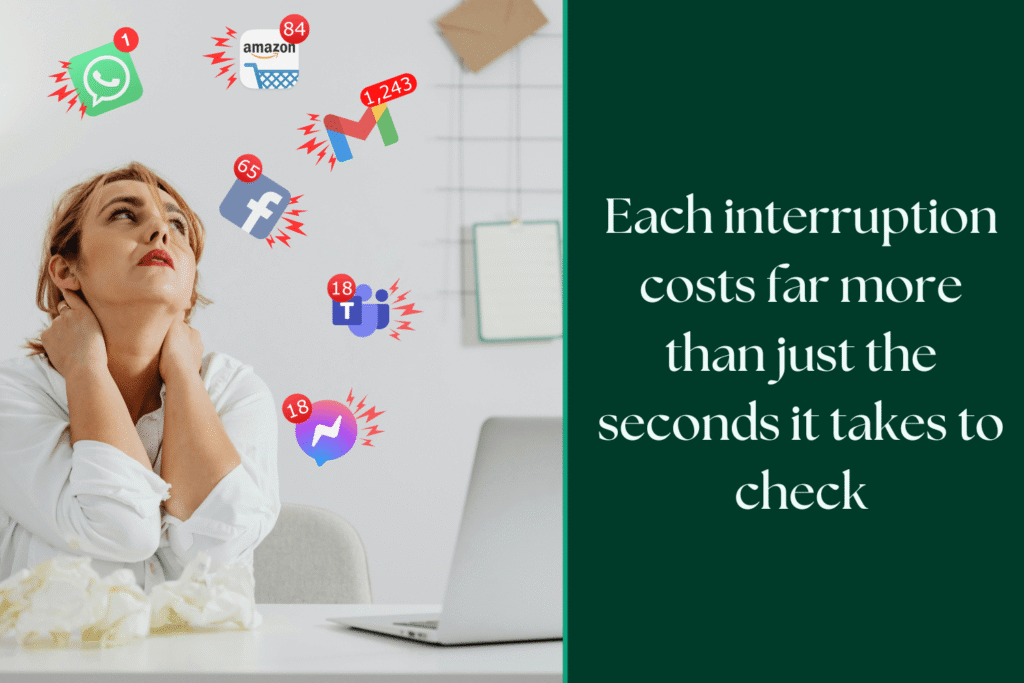
When your phone buzzes, the actual interruption might last only seconds. But research shows the true cost is much higher:
- It takes an average of 23 minutes to fully regain your focus after an interruption
- Task-switching increases error rates by up to 50%
- The mental effort of constantly reorienting creates “attention residue” that depletes cognitive resources
- Persistent interruptions trigger stress responses that accumulate throughout the day
This cognitive tax affects everyone, but it can be particularly burdensome when you’re learning how to use technology for unfamiliar tasks or trying to complete important activities online.
The Social Expectation Trap
“I need to always be available in case someone needs me.”
This sentiment reflects a relatively new social contract—one that emerged without most of us consciously agreeing to it.
The expectation of constant availability has transformed from technological possibility to social requirement in just a generation. Many people, especially those who remember life before smartphones, feel caught between:
- Wanting to be responsive to loved ones
- Needing uninterrupted time for work and rest
- Feeling anxiety about “missing something important”
- Desiring genuine connection without constant digital mediation
The result is a persistent low-level stress that follows you throughout the day, eroding your sense of autonomy and peace. Learning how to use technology in a way that serves your wellbeing requires rethinking these implicit social contracts.
Reclaiming Your Attention: Five Practical Strategies
The good news? You can regain control of your technology without abandoning it altogether. Here’s how to use technology on your own terms:
1. Create Intentional Notification Boundaries
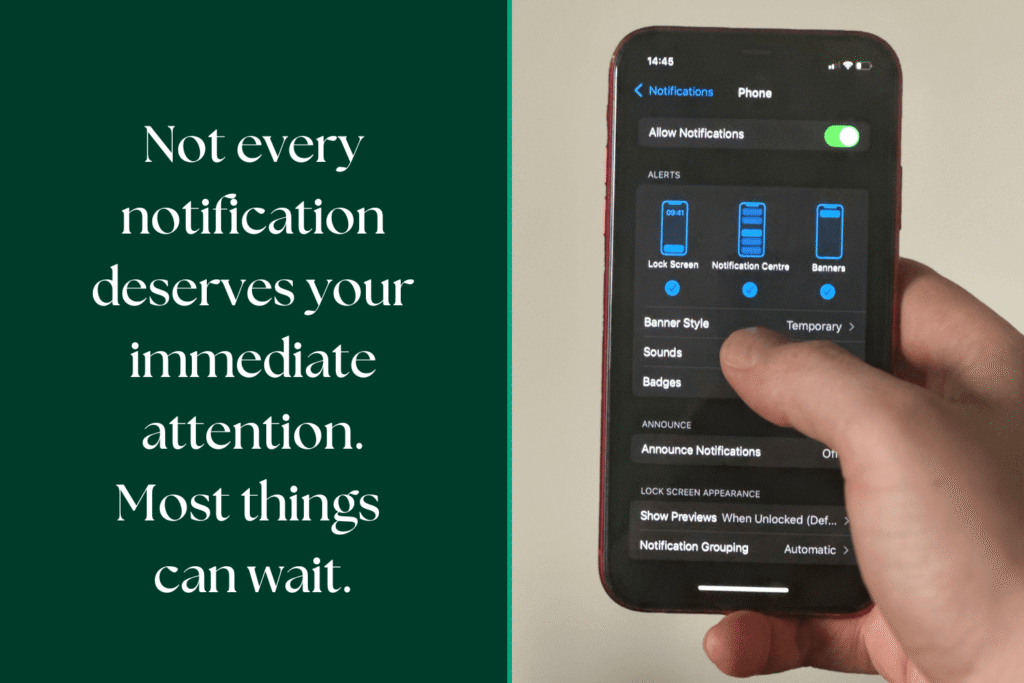
Your devices come preset to interrupt you for virtually everything—but you can change that:
- Audit your notifications: Go through each app and ask “Does this deserve to interrupt my thoughts?”
- Batch similar notifications: Set email to update hourly rather than instantly
- Use Do Not Disturb scheduling: Automatically silence notifications during focused work, family dinners, or sleep
- Prioritize human connections: Allow calls from specific people to break through even when notifications are silenced
Remember: The people who designed these default settings optimized for their goals, not yours. Changing them is an act of digital self-determination.
2. Design a Digital Environment That Respects Your Focus
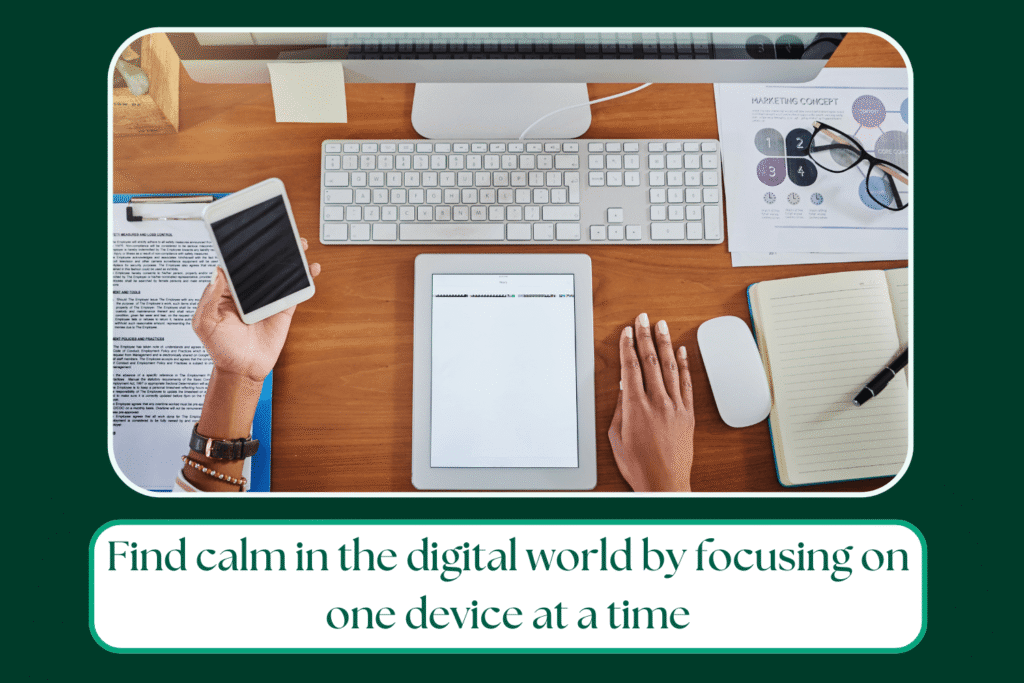
Your physical and digital workspaces powerfully influence your attention:
- Embrace single-tasking: Use one device for one purpose at a time
- Create digital distance: Keep phones out of sight during focused activities
- Use technology to block technology: Apps like Freedom or Focus Mode can block distracting sites
- Simplify your home screens: Remove attention-grabbing apps from your main screen
This isn’t about technological austerity—it’s about learning how to use technology in a way where your tools serve your intentions rather than hijacking them.
3. Master the Art of Tech-Enabled Boundaries
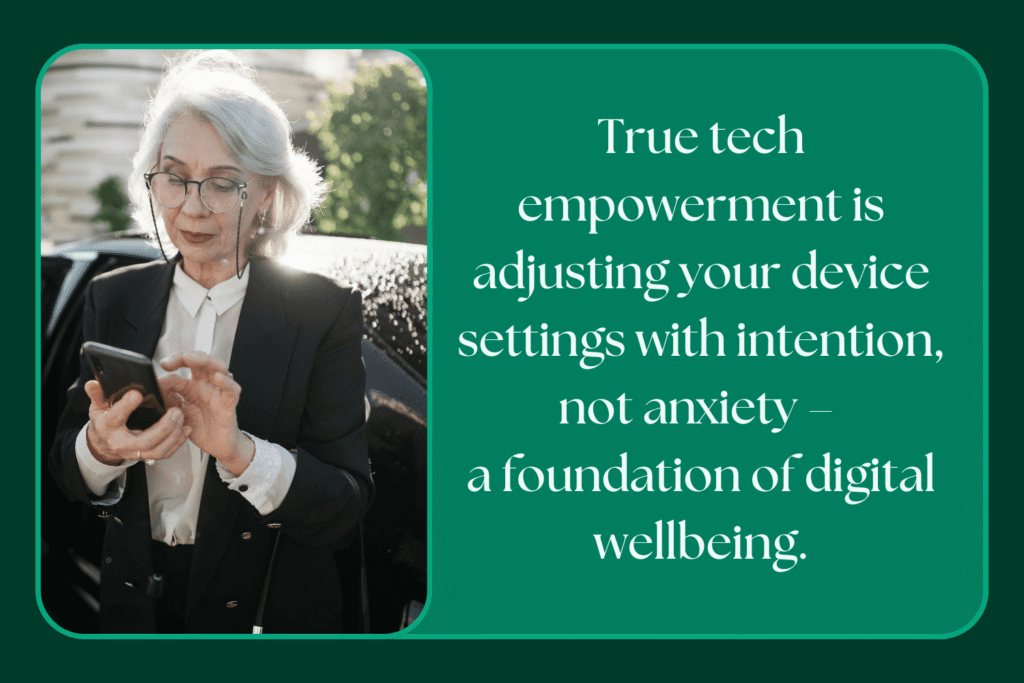
Technology can actually help you communicate boundaries effectively:
- Use auto-responders strategically: Let people know when you’ll respond to non-urgent matters
- Leverage status indicators: Many messaging platforms allow you to signal your availability
- Schedule communications: Draft messages when convenient for you, but send them at appropriate times
- Explain your communication patterns: Help friends and family understand that your delayed response isn’t rejection—it’s intentionality
The most respectful response isn’t always the fastest one. Quality attention, even if delayed, serves relationships better than fractured immediacy.
4. Practice Digital Transitions That Preserve Mental Clarity
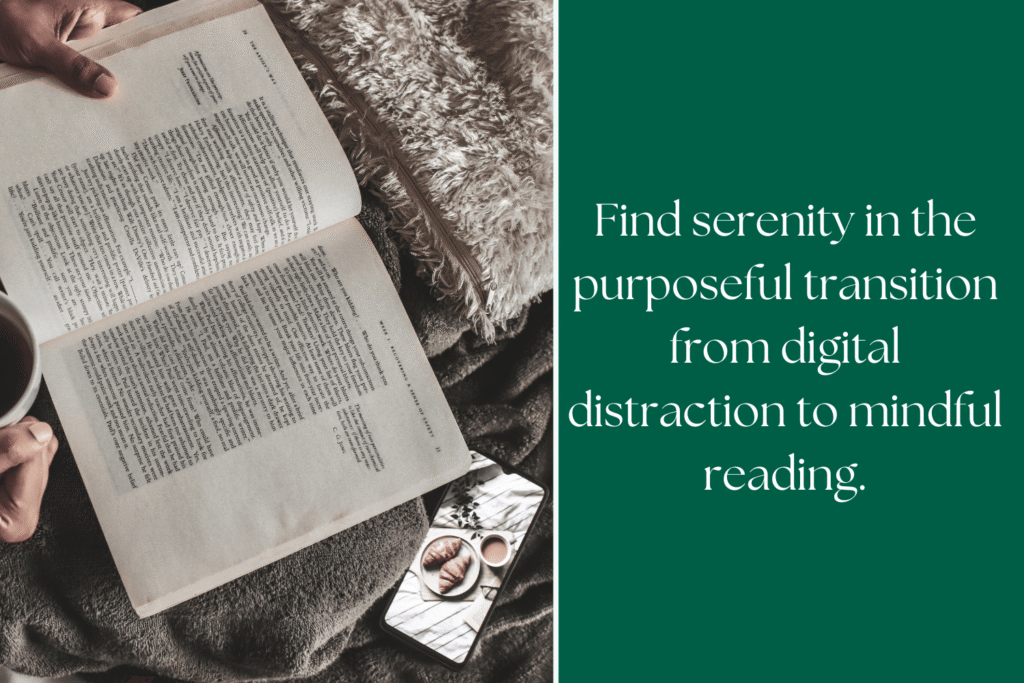
The moments between activities matter enormously for mental wellbeing:
- Create buffers between digital and non-digital activities
- Develop small rituals that signal context shifts: Close browser tabs before ending work
- Use physical movement to reset your attention: Stand up and stretch when switching tasks
- Give yourself permission to completely disconnect for defined periods
These transitions aren’t wasted time—they’re investments in cognitive restoration that make your time with and without technology more valuable.
5. Build a Relationship with Technology Based on Choice, Not Habit

Many digital interruptions persist not because they’re necessary, but because they’ve become unconscious habits:
- Notice habitual checking behaviors: What triggers your reach for the phone?
- Create intentional tech use rules: “I’ll check social media after completing this task” rather than “whenever I feel a momentary lull”
- Distinguish between using technology and being used by it
- Celebrate moments of digital independence: Notice how it feels when you’re fully present
This mindful approach transforms your relationship with technology from reactive to intentional—and significantly reduces the stress of constant interruption.
Your Path to Technological Peace
The journey to a calmer relationship with technology isn’t about digital abstinence. It’s about reclaiming your right to decide when, how, and why you engage with your devices. Learning how to use technology mindfully is perhaps the most valuable digital skill you can develop.
Every ping doesn’t deserve an immediate response. Every update doesn’t warrant your attention. Every message doesn’t require instant acknowledgment.
By implementing even one of these strategies, you begin shifting from a technology relationship based on interruption to one founded on intention. The result isn’t just greater productivity—it’s a profound sense of reclaiming your mental space and attention for what truly matters to you.
At Hebden Tech Tutors, we believe that knowing how to use technology shouldn’t just mean understanding buttons and features—it should include creating healthy boundaries with your devices. We’d be honored to help you create a personalized plan for managing digital interruptions and building technology habits that respect your need for focus, presence, and peace.
After all, the most sophisticated technology in your life is still your own mind. Protecting its ability to think deeply, connect genuinely, and rest completely might be the most important aspect of learning how to use technology in today’s connected world.
Find out more about what we can do for you!
About the author:
- Windows 10 is Retiring Soon - April 22, 2025
- Taking Control of Your Online Privacy with Brave Browser - April 8, 2025
- Finding Peace in a World of Pings: How to Use Technology Without It Using You - March 19, 2025
